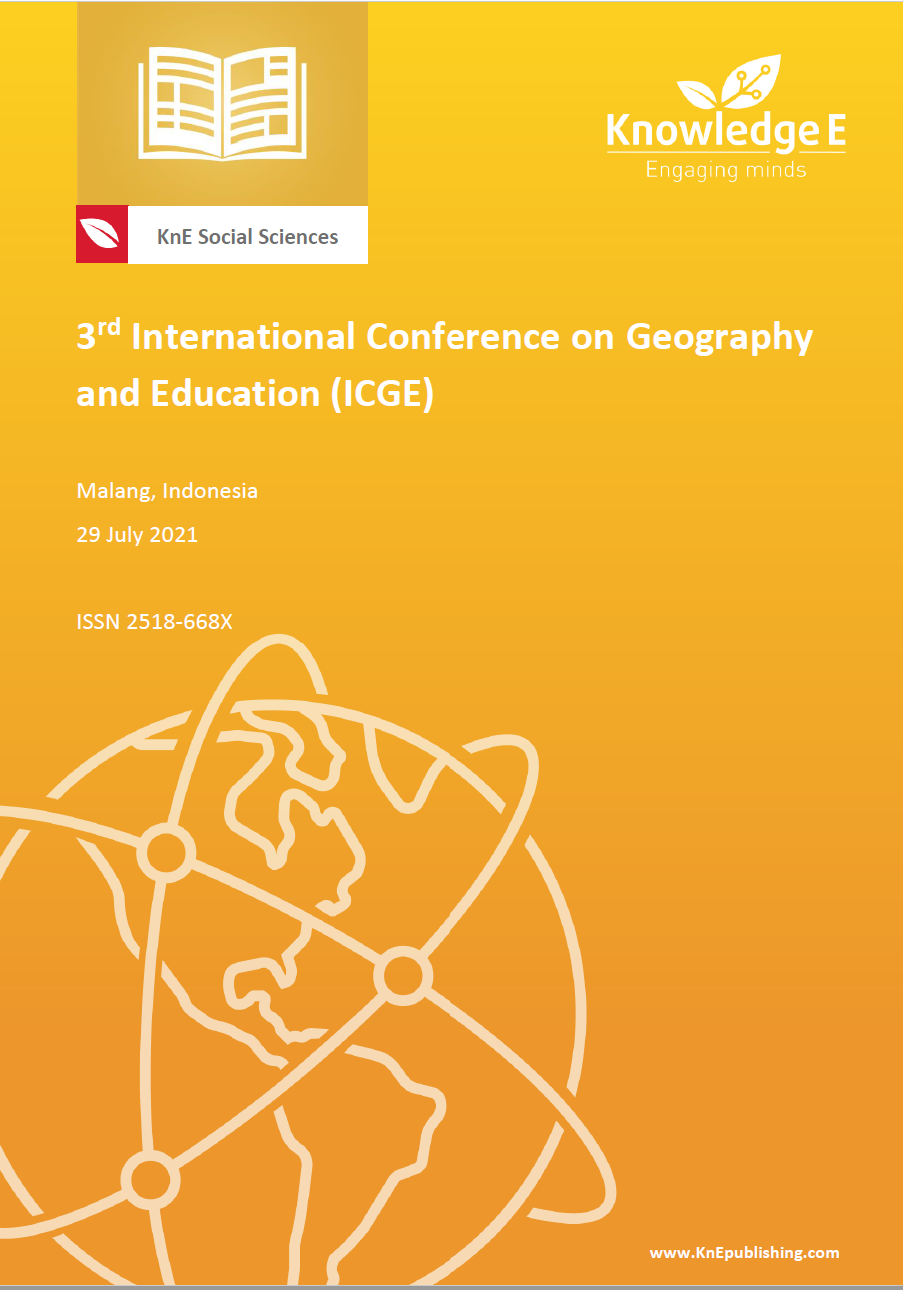Toponymic and Historiography Influences on Place Naming of Villages in Klego District, Indonesia
DOI:
https://doi.org/10.18502/kss.v7i16.12155Abstract
Place naming creates a link between language, culture, and ideas. This study sought to conduct an assessment of the naming process for villages and hamlets in Klego District, Boyolali Regency, Central Java Province. The study attempted to find naming patterns based on geographical appearance (toponym) and social culture or history (historiography). In addition, the study sought to find the structure of signs and meanings which those villages and hamlets used in naming. A qualitative-descriptive approach was used. Data were collected using interviews with stakeholders and local communities considered to be knowledgeable in the etymology of local names in their area. The results showed that the toponym and historiography of villages and hamlets in Klego District, Boyolali Regency were broadly based on physical, social, and cultural aspects. The physical aspects involved a) biological elements, b) hydrological elements, and c) geomorphological elements. The social aspects involved a) specific places, b) past activities, c) hope, d) the name of historical buildings, and e) the name of famous figures. The cultural aspects involved legends or folklore. However, there were many people in the area who did not know the toponymical and historiographical processes involved in local place naming. Our research showed that this was the result of low public knowledge of the meaning and origin of toponymy and historiography in the area.
Keywords: toponymy, historiography, naming patterns, public perception
References
[2] Fagúndez J, Izco J. Spatial analysis of heath toponymy in relation to present-day heathland distribution. International Journal of Geographical Information Science. 2016;30(1):51–60.
[3] Feng CC, Mark DM. Cross-linguistic research on landscape categories using GEOnet names server data: A case study for Indonesia and Malaysia. The Professional Geographer. 2017 Oct 2;69(4):567-78.
[4] Radding L, Western J. What’s in a name? Linguistics, geography, and toponyms. Geographical Review. 2010;100(3):394–412.
[5] Tent J, Blair D. Motivations for naming: The development of a toponymic typology for Australian placenames. Names. 2011;59(2):67–89.
[6] Calvo-Iglesias MS, DÍaz-Varela RA, MÉndez-MartÍnez G, Fra-Paleo U. Using place names for mapping the distribution of vanishing historical landscape features: The Agras field system in northwest Spain. Landscape Research. 2012;37(4):501–517. https://doi.org/10.1080/01426397.2011.604716
[7] Situ S. Human geography history in lingnan – A comparative study of Cantonese, Hakka, Hoklo people. Guangzhou: Zhongshan University Press; 2001.
[8] Daris S. Toponimi della Meris di Polemone. Aegyptus; 1984;64(1/2):101-120.
[9] Agustan A. Toponimi, bukan hanya tata cara penulisan nama unsur geografis. Malang: Aditya Publising;2008.
[10] Mardiana W. The sapir-whorf hypotesis and toponomy study: place naming using javanese language. Paper presented at: Konferesi Linguistik Tahunan Atmajaya; 2014 Okt 25; Jakarta, Indonesia. Jakarta, Indonesia: Universitas Atmajaya; 2014.
[11] Sari D, Mursidi A. Toponomi desa se-kecamatan Srono Kabupaten Banyuwangi [Internet]. Seminar Nasional Pendidikan Budaya dan Sejarah “Dibalik Revitalisasi Budaya”; 2018 Jul 17; Banyuwangi, Indonesia. Banyuwangi, Indonesia: FKIP Universitas PGRI Banyuwangi;2018 [cited 2021 Feb 21]. Available from: https://doi.org/10.31227/osf.io/whtzp
[12] Nasution MF. Addressing the impolite language in mass media. Ekonomi Bisnis Manajemen dan Akuntansi (EBMA);2020;1(1):41–48.
[13] Camalia M. Toponimi kabupaten lamongan (kajian antropologi linguistik). PAROLE: Journal of Linguistics and Education. 2015;5(1):74-83. https://doi.org/10.14710/parole.v5i1.8625
[14] Piliang YA. Semiotika dan hipersemiotika: Kode, gaya & matinya makna. Yogyakarta: Matahari; 2012.

